The secret to making your favourite city break even better, from Paris to Barcelona
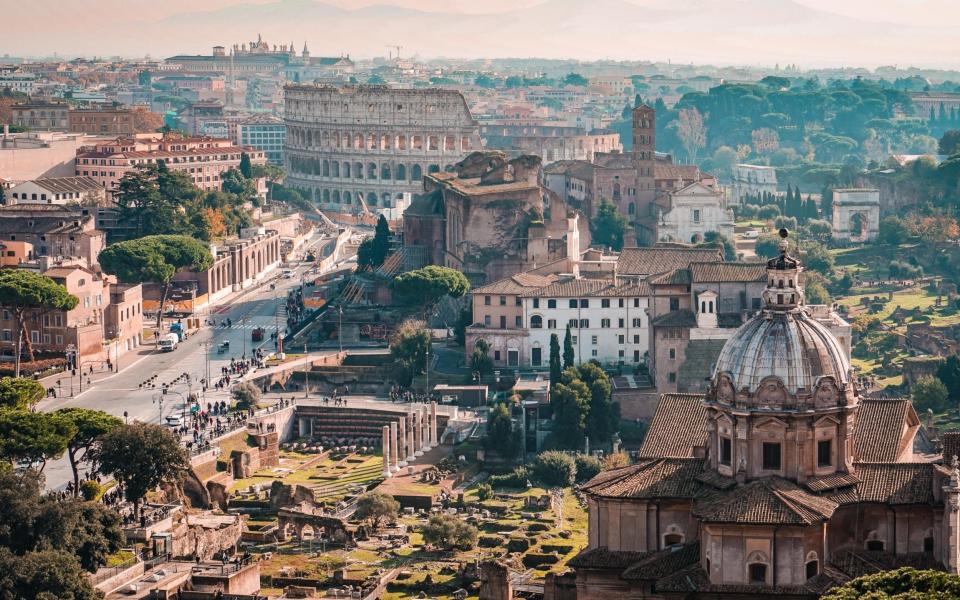
They sound, admittedly, like daft questions, the sort of enquiries that beg a daft answer. But what exactly constitutes a city break? And does it have to involve a city?
The second question is particularly silly. Yes, of course a city break must involve a city. It needs to include a grand main square, and the extended shadow of a cathedral tower, tilting in the afternoon light. It needs to take in museums, galleries and works of fine art. It should certainly feature lazy lunches in side-street cafés, and decadent dinners in busy restaurants – with the promise of the evening stretching into bars abuzz with local chatter.
But beyond this, couldn’t a city break be more than the obvious – drifting away from the main attractions and a central location into wider suburbs, outer edges and the charms of the region beyond? Why not? A city break can be so much more than the city at the heart of it, and in the case of Europe’s greatest capitals and most celebrated urban hotspots – those splendid places of known quantities and repeat visits – it almost certainly should be.
The goal here is to look, if not quite to the horizon, then definitely to the end of the underground systems and rail networks that spider-web around some of the major cities of France, Spain, Italy et al. If you have already been to Paris three, four or seven times – or if you know the heartbeat areas of Rome as well as your own postcode – then the ideas below are for you.
Six Telegraph Travel experts have turned their gaze to the peripheries of the cities they know best, picking out historic sights, country estates, genteel vineyards and even seaside resorts. From the palace halls of Lisbon satellite Sintra to the medieval walls of Barcelona’s close friend Girona and the beaches that shape the Lazio coast – tantalisingly close to the Eternal City – these are the optional extras, all within simple day-trip range, which will add an extra delight to a long weekend in a favourite destination.
Moreover, autumn is the ideal time for a getaway to a thriving city; a happy medium wherein summer’s more excessive temperatures have slipped away but life is still lived outdoors, in parks and on terraces, ahead of winter’s change of mood. The Christmas market will keep for now. This is the season for city-breakers to explore.
Barcelona
Barcelona is many kinds of breaks in one: with all the art, history and street life you could need, it also has beaches and an abundance of sunshine, while the forested hills that flank it are crisscrossed with quiet walking trails unfurling to sweeping views. There are restaurants and hotels for every budget. If, however, you want a change of scene, a cheap and efficient public transport system has you covered. The Praktik Garden (00 34 93 467 52 79; hotelpraktikgarden.com) offers double rooms from £100 per night. See our full Barcelona guide here.
By Sally Davies
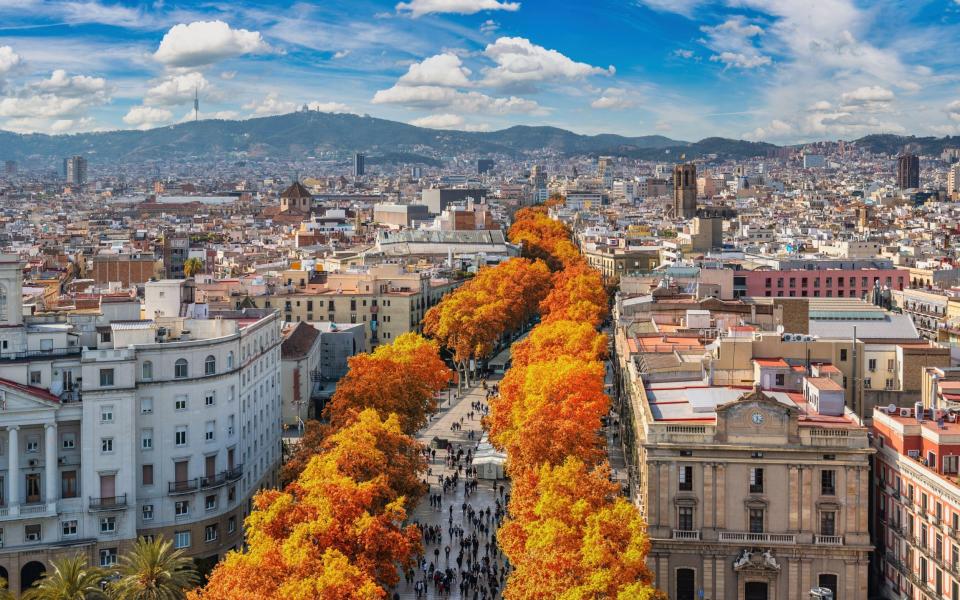
Wine country
Catalonia has 10 wine regions, the largest of which (and the birthplace of cava) is the Penedès. At its heart is the medieval market town of Vilafranca del Penedès, which has a wine museum (vinseum.cat), a grand 14th-century basilica and a slew of tapas bars, and makes a great base to explore local vineyards. It’s easily reached by frequent train from Sants station (£4.80), but for the Codorníu or Freixenet vineyards you’ll need to take a bus from Vilafranca (87p) to Sant Sadurní d’Anoia.
Girona
This handsome medieval city, flanking the river Onyar, has enjoyed a splurge of popularity in recent years thanks to Game of Thrones, some of which was filmed here, in the winding streets leading to the glorious cathedral. It’s famous for its rambling Jewish quarter and fine restaurants as well as a 12th-century bathhouse and Romanesque monastery. Quirky museums include the fascinating Museu del Cinema (museudelcinema.cat), and there is a handful of art galleries. Frequent trains run from Barcelona Sants (from £12).

Sant Pol de Mar
For a lesser-visited beach town within easy reach of Barcelona, try pretty little Sant Pol de Mar, a low-slung whitewashed town that curls around the coast with a string of sandy beaches. It’s not teeming with must-see attractions, apart from a couple of whimsical modernista houses, but its atmospheric streets make for a pleasant stroll, and there are plenty of excellent restaurants, some of which are right on the sand. There are around three trains an hour from Plaça Catalunya (£4.80).
Delta de l’Ebre
For something completely different it’s worth rising early for a day trip to the Ebre delta. A flat spit of paddy fields and marshy coastline, it has its own ecosystem (flamingos!) and cuisine – try the smoked eel or species of shellfish native to the delta. Hiring bikes is a great way to see it all. Take a bus from C/Numancia 165 to Deltebre (£19.50).
Paris
As September rolls into October, Paris comes alive again. With the rentrée finally in full swing, the city reawakens. Museums unveil jam-packed autumn exhibition programmes, long nights on the banks of the Seine are replaced by cosy evenings in art house cinemas and truffles are liberally sprinkled over restaurant menus citywide. Best of all, the summer crowds finally disperse. The stylish Hotel Les Deux Gares (00 33 01 85 73 11 83; hoteldeuxgares.com) offers double rooms from £109 per night on the doorstep of Gare du Nord. See our full Paris guide here.
By Eleanor Aldridge

La Roche-Guyon
This is the only village within Île-de-France deemed beautiful enough to be officially labelled one of the Plus Beaux Villages de France. It’s easy to see why as you first glimpse the imposing medieval château sitting atop the chalk cliffs and the French-style gardens running down to the banks of the Seine. Historical trails take you from the castle’s ancient troglodyte rooms to the top of its oldest tower, built in 1190. The easiest way to get there is to hire a car; the village is an hour’s drive from Paris.
Troyes
Often overlooked in favour of Chartres or Rouen, Troyes is one of the most enchanting towns within easy reach of Paris. You could happily spend an entire day just soaking up the atmosphere, strolling the cobbled streets and admiring the half-timbered houses, perhaps peeking into the elegant Cathédrale Saint-Pierre Saint-Paul. Rainy days call for a few hours in the Musée d’Art Moderne or Musée des Beaux-Arts (musees-troyes.com). Fast trains from Gare de l’Est to Troyes (from £8.70) take 1hr and 30 minutes.
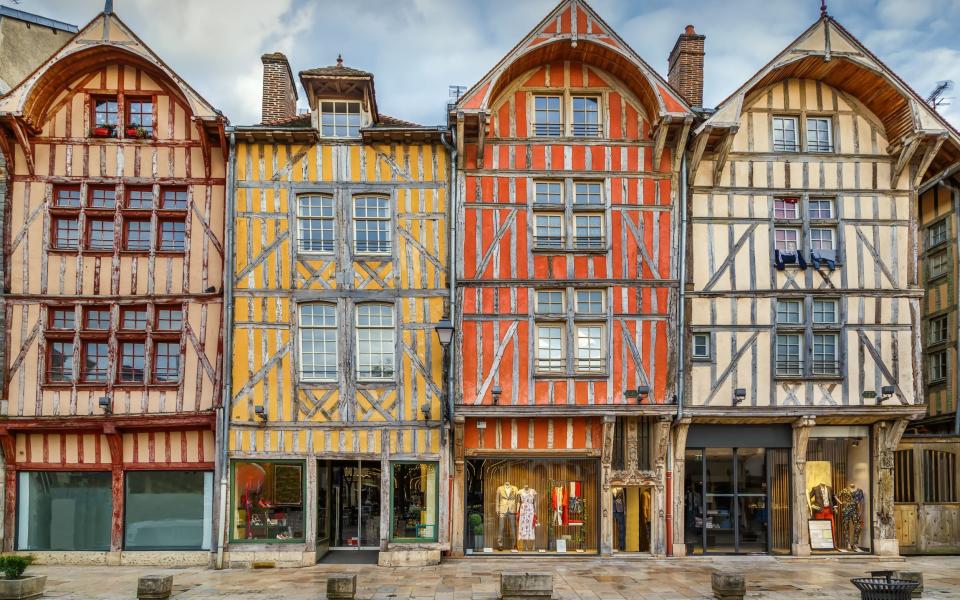
Epernay
What better way to celebrate harvest season than by popping the cork on a bottle of bulles in Épernay, the capital of Champagne? Albeit a bottle that’s already spent at least the past 15 months quietly maturing in the labyrinthine cellars running beneath the Avenue de Champagne. Book online a few weeks ahead for tours and tastings at big names such as Moët & Chandon or Mercier. Fast trains from Gare de l’Est to Épernay (from £8.70) take 1hr and 13 minutes.
Chantilly
Crisp autumn mornings are perfect for exploring Chantilly’s peaceful château and sprawling forest. This small town to the north of Paris is renowned for its equestrian history, preserved in the château’s palatial Grandes Écuries (stables) and engaging Musée du Cheval (chateaudechantilly.fr). Of course, no trip is complete without a chocolat chaud laden with the whipped cream to which the town lends its name. Trains from Gare du Nord to Chantilly (£7.50) take 23 minutes; it’s a 20-minute walk from the station to the château.
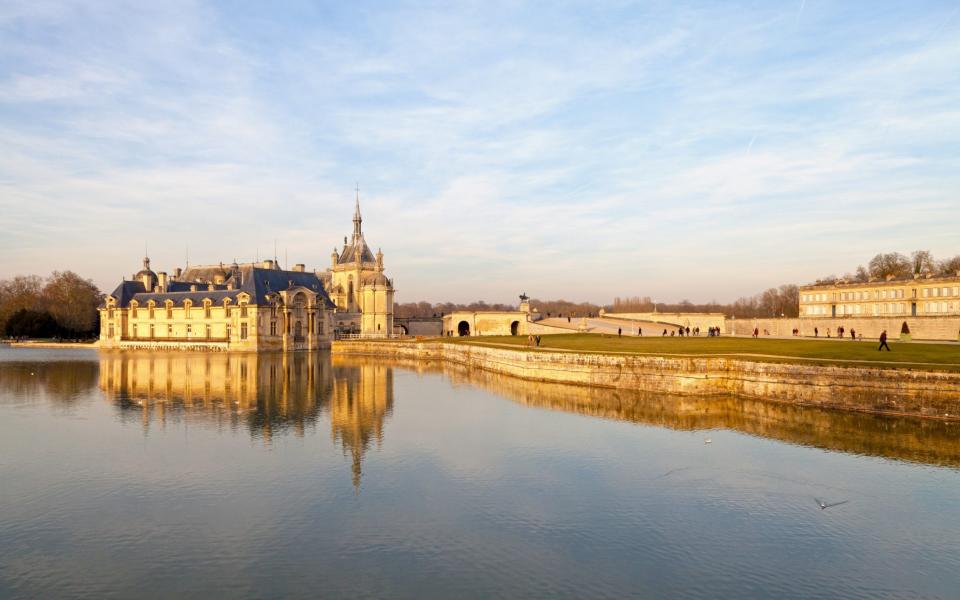
Rome
Whether it is culture, cuisine or cool la dolce vita vibes that floats your boat, the Eternal City offers endless options. Stroll the cobblestone streets of the centro storico to take in magnificent ancient ruins and baroque piazzas by day, carb-happy trattorias and teeming cocktail bars by night, then – when you are ready for a break from Rome’s cosmopolitan pleasures – a variety of adventures await outside the city limits. Maalot Roma (00 39 06 878087; hotelmaalot.com) offers double rooms from £450 per night. See our full Rome guide here.
By Rebecca Winke
Via Appia
Hop on an e-bike to pedal along the Via Appia, the ancient Roman highway that once stretched from Rome’s Aurelian Wall to the port city of Brindisi on the opposite coast. Still paved with cobblestones from the fourth century BC, the Appian Way is lined with fabulous archaeological sites, catacombs, and – surprise! – flocks of docile sheep. You can rent an e-bike near the Porta San Sebastiano starting point (00 39 06 4882893; topbikerental.com; £25 a day) for a self-guided ride.
Orvieto
Channel some medieval hill town charm without spending hours travelling to Tuscany with a quick trip to Orvieto, an atmospheric clifftop outpost in southern Umbria (just over an hour away by Intercity rail; £30 return). Home to one of Italy’s most awe-inspiring gothic cathedrals, this tufa-stone town scratches your itch for quiet winding lanes, pretty piazzas, and sweeping bird’s-eye views plus offers excellent rustic Umbrian fare heavily laced with the region’s signature black truffles.

Santa Marinella
A beach break may not be the first thing that comes to mind for Rome, but the Tyrrhenian coast is only an hour away by local train (£10 return). On the final balmy days of autumn, Romans head to Santa Marinella to bask and bathe, so hire a lounger and umbrella from one of the stabilimenti balneari (beach clubs) on the shoreline and unplug riviera style, abandoning your post only to feast on fresh seafood at a restaurant along the promenade.
The Frascati hills
Just a 30-minute (£8.50 return) train ride from Rome, the Frascati hills have been known for their crisp yet aromatic white wines since ancient times and make for a delightful half-day jaunt from the capital city. Settle in at a table at one of the many traditional fraschette (wine bars) in town for a rustic plate of pasta washed down with a glass (or two) of Frascati Superiore DOCG or go right to the source with a winery visit and tasting in the surrounding countryside (00 39 349 28 78 141; minardifrascatiwinery.com). To visit a winery, you’ll need to hire a car.
Lisbon
Some come for the sun and sand, but Lisbon ticks more boxes than blue skies and beaches, and makes an excellent destination year round. Here too are rooftop bars, buzzing restaurants and desirable pottery, impressive wines, fascinating museums and memorable, magical light. The Vintage Lisbon (00 351 210 405 400; thevintagelisbon.com) offers double rooms from £155. See our full Lisbon guide here.
By Mary Lussiana

Obidos
Sitting to the north of the capital, the whitewashed medieval town of Obidos is famous for a sour-cherry liqueur, Ginjinha, which is here served as a shot in specially made little chocolate cups. The beautifully preserved town walls enclose an ancient castle and a number of churches, filled with hand-painted azulejos tiles. Bookshops abound along the narrow-cobbled streets, as is fitting for a Unesco city of literature. If you stop for lunch try fish from the nearby lagoon. Take a direct bus from Lisbon’s Sete Rios bus station – they’re regular and take about 70 minutes (£4.40).
Sintra
Head out to Sintra, described by Byron as a “glorious Eden” in his epic poem “Childe Harold’s Pilgrimage”. Above the pretty town where the royal family used to summer – now Portugal’s best-preserved medieval royal residence – lies the romantic fairytale palace of Pena, its boldly coloured, domed and turreted silhouette standing out against the skyline. Trains run direct from Lisbon’s Rossio station every 30 minutes and take roughly 40 minutes (£2.60).
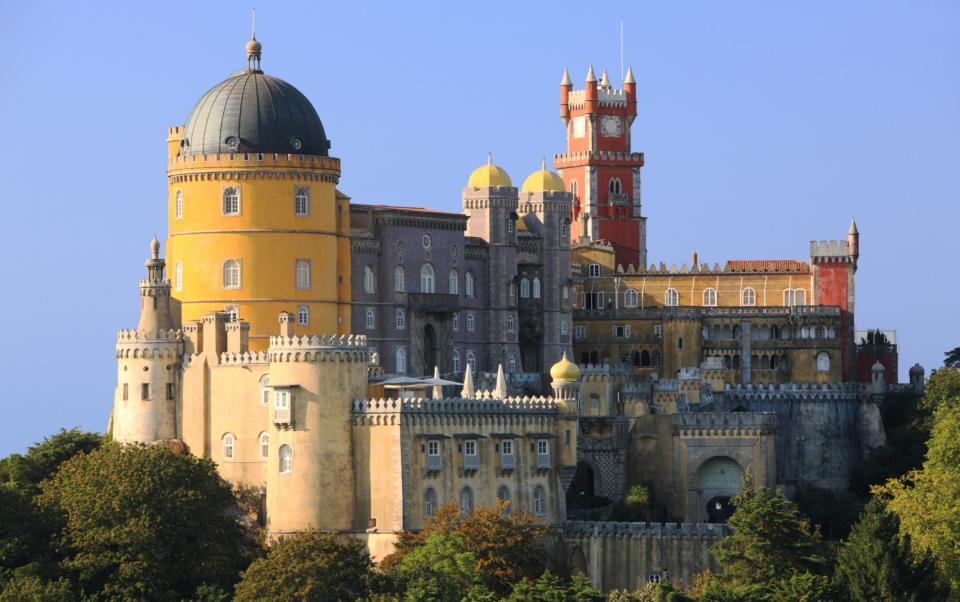
Costa da Caparica
Make the most of the blue skies and head out to one of the beaches along the Caparica coast, just 20 minutes or so from Lisbon. You could do sunset and oysters at the hot new Casa Reîa on the Cabana de Pescador beach or spend the day on Praia Morena. Lunch at Borda d’Agua (bordadagua.com.pt) on fresh sea bass and siesta under a straw umbrella. Buses run direct from the TST station to the coast in 30 minutes (£2.60).
Paula Rego museum, Cascais
For full immersion in Portuguese art and architecture, head to the Casa das Historias Paula Rego (casadashistoriaspaularego.com), built to house the artists’s work and designed by acclaimed architect Eduardo Souto de Moura. Its design is a nod to the nearby royal palace of Sintra with its two prominent towers, and inside you’ll find a collection that spans more than 50 years of her work. The 19001 train runs from Lisbon’s Cais do Sodre station and takes 50 minutes (£2.60).
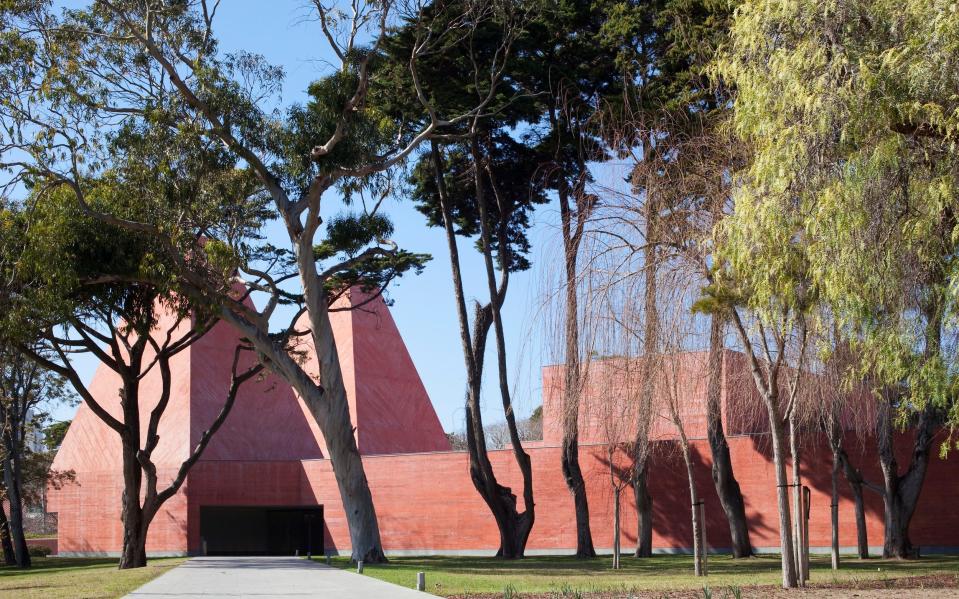
Vienna
Vienna mellows out in autumn, when you can give the crowds the slip by heading to the vines, hills, lakes and spa towns on the city’s rather beautiful doorstep. Hotel Rathaus Wein & Design (00 43 1 400 11 22; hotel-rathaus-wien.at) offers double rooms from £150 per night. See our full Vienna guide here.
By Kerry Walker
Baden bei Wien
Bath-loving Habsburg royals, Mozart, Strauss and Beethoven (seeking a cure for his deafness) raved about Baden bei Wien during Austria’s 18th- and 19th-century spa boom. Like the Romans who had come before them, they were drawn to Baden’s location in the Wienerwald, the forested hills that unfurl southwest of Vienna, the Heurigen (wine taverns) and the spa’s miracle-working sulphurous waters. Come to walk in the woods, catch autumn wine fests, and wallow in the therapeutic waters of its huge, glass-canopied Römertherme spa. Frequent trains run from Vienna to Baden (27 minutes; £5.30).
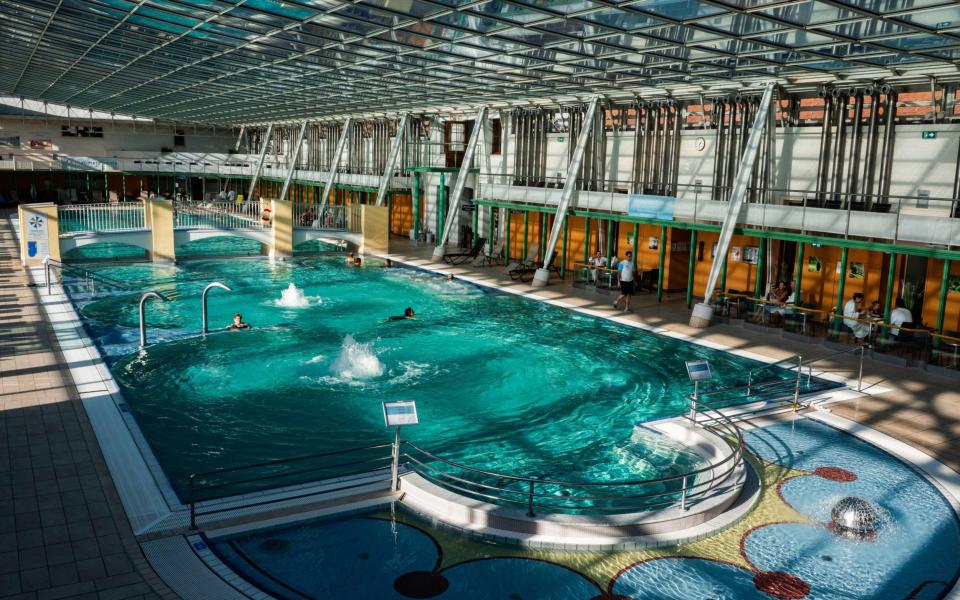
Neusiedler See
At the lowest point in Austria, Europe’s second biggest steppe lake is a knockout (bring binoculars as 350 bird species breed and migrate here). Hugging the lake’s western shore, Rust am See is a picture, with placid waters, wooden boathouses peeking above the reeds and storks clattering in rooftop roosts. When the vines turn gold in autumn, it’s a cracking spot for a glass of full-bodied Zweigelt red wine at a local Heuriger. Rust is an hour’s drive south of Vienna, or 90 minutes by train or bus (£11.60).
The Wachau
The Wachau is so darned romantic, you might catch yourself humming Strauss’s The Blue Danube as you waltz through its vine-ribbed hills on a misty autumn morning. With its terraced vineyards, apricot orchards, forested slopes and baroque churches, this World Heritage stretch of the river, an hour’s drive west of Vienna, is no secret, but it’s quieter in autumn, when tourist numbers nosedive and Heurigen crack open bottles of new wine. Rent a bike and pedal an hour and a half from Krems to Stift Melk, a grand-scale Benedictine abbey on a scenic bend in the river. It’s an hour’s train ride to Krems from Vienna’s Franz-Josefs-Bahnhof (£16.80).
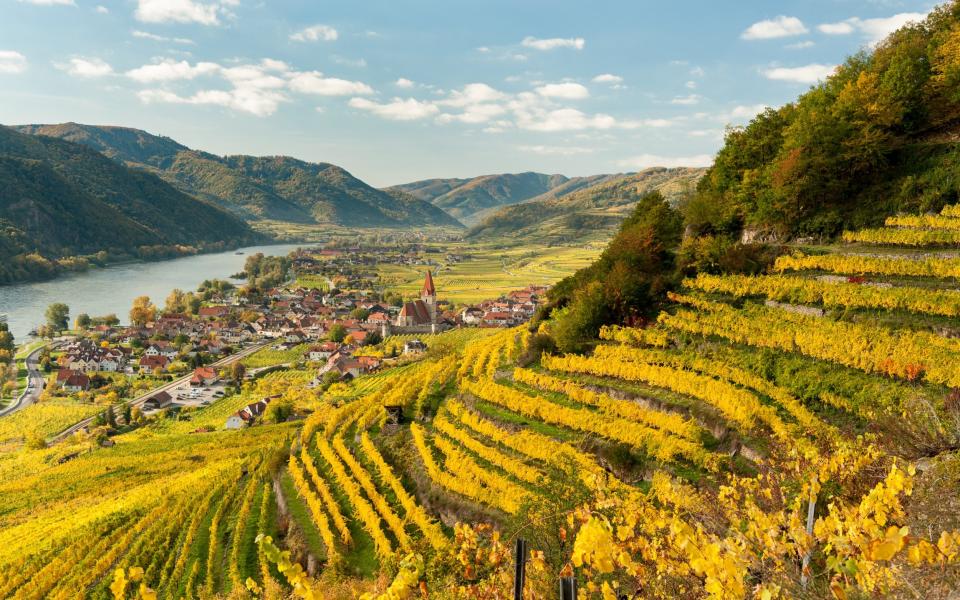
Lainzer Tiergarten
Deep in the woody Wienerwald is the old royal hunting ground of Habsburg emperors, with ancient oak and beech forests so wild they still provide refuge for deer, mouflon and boar. On its eastern fringes, visit the whimsically turreted Hermesvilla, which Emperor Franz Joseph I had built to woo his beauty queen Elisabeth, or “Sissi”. You can see Elisabeth’s riotously gilded bedchamber and the gym where she tirelessly trained to keep her famous 40cm (16in waist). Take the U-Bahn U4 to Hietzing then switch to bus 56B to Lainzer Tor (45 minutes; £1.90).
Brussels
Brussels’s rewarding collection of attractions remains as alluring as ever: the exhilarating architecture of the Grand Place, the surprising delights of the Royal Museums of Fine Arts, the Art Nouveau buildings, the excellent restaurants and bars and sumptuous chocolate that are so much a part of the city’s everyday life. Heading out to other satellite attractions helps to place all this in the perspective of the rich patrimony of Belgium. Hotel Le Dixseptième (00 32 2 517 1717; ledixseptieme.be) offers double rooms from £150 per night. See our full Brussels guide here.
By Antony Mason
Ghent
A city which offers the charms of a medieval city, plus the lively atmosphere of a university town, and a handful of good museums to entertain you. Just last year a new visitors’ centre in the cathedral was opened to house Ghent’s greatest treasure, Hubert and Jan van Eyck’s polyptych The Adoration of the Mystic Lamb (1432), now fully restored to pristine glory (visit.gent.be). The city is about 35 minutes by train from Brussels (North, Central and South stations; about £20 return).

Leuven
Leuven has the feel of a sweet, pocket-sized medieval city like Bruges, plus the lively university vibe of Ghent. Its town hall is a glorious wedding cake of gothic elaboration, and the Sint-Pieterskerk opposite has some exceptional Flemish art of the same period. The museum called M Leuven (mleuven.be) also has a good permanent collection from across the spectrum of Belgium art, and prides itself on cutting-edge temporary exhibitions. Leuven is about 25 minutes by train from Brussels (North, Central and South stations; £14 return).
Antwerp
There’s a muscular sea-port feel to Antwerp – a modern city centring on a medieval heart and cathedral, and the hometown of the great baroque artist Peter Paul Rubens (1577–1640), powerfully evoked in the Rubens House (rubenshuis.be), where he lived and worked, and in the cathedral and several churches. Antwerp’s Royal Museum of Fine Arts, KMSKA (kmska.be), has also just reopened after 11 years of renovation and redesign: its world-class collection includes, of course, plenty of Rubens. It’s about 45 minutes by train from Brussels (North, Central and South stations; about £20 return).
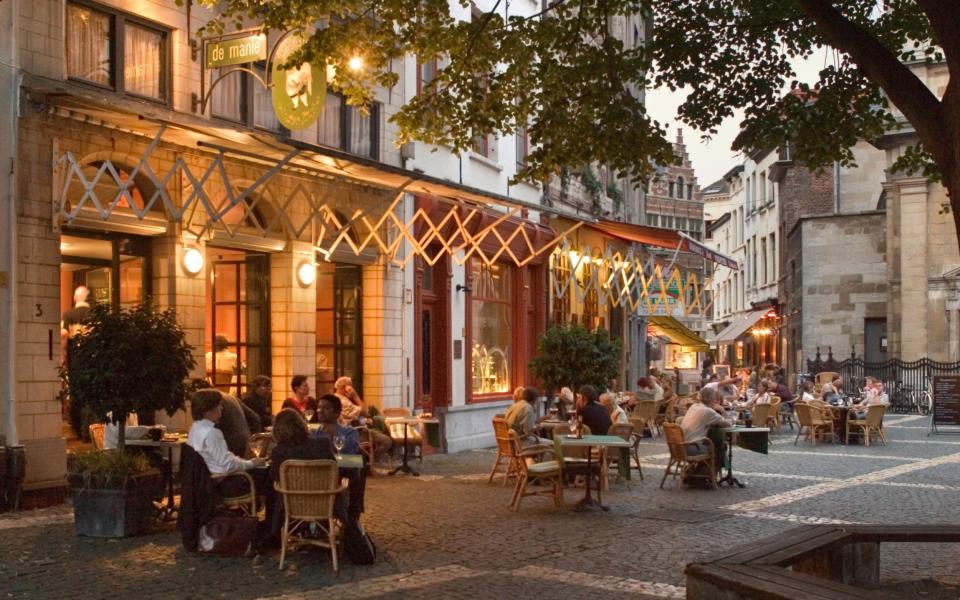
Leuven
Leuven has the feel of a sweet, pocket-sized medieval city like Bruges, plus the lively university vibe of Ghent. Its town hall is a glorious wedding cake of Gothic elaboration, and the Sint-Pieterskerk opposite has some exceptional Flemish art of the same period. The museum called M Leuven (mleuven.be) also has a good permanent collection from across the spectrum of Belgium art, and prides itself on cutting-edge temporary exhibitions. Leuven is about 25 minutes by train from Brussels (North, Central and South stations; €16 return).
Waterloo
The final defeat of Napoleon at the Battle of Waterloo (nine miles south of Brussels) on June 18 1815 was a pivotal moment in European history. The locals understood its significance from the off, and preserved the battlefield intact as tourists started to flock here almost before the bodies had been buried. Today the Memorial 1815 visitor centre provides a thorough background, from which you can launch out on walks to various farmhouses and ridges where the main clashes took place – and picture in your mind’s eye an oncoming cavalry charge of 5,000 horses.
Ideally, go by car, to visit the various sites around the battlefield, though bus lines W or 365 go from Brussels South Station (Ave Fonsny) to Waterloo and the battlefield and take about 50 minutes (£7.25 return).
For full details of entry requirements and Covid rules for your favourite destinations, see telegraph.co.uk/tt-travelrules. Refer to gov.uk/foreign-travel-advice for further travel information.

 money
money 